Orbitals In The 4f Sublevel
4f atomic orbitals
For any atom, there are vii 4f orbitals. The f-orbitals are unusual in that at that place are two sets of orbitals in common apply. The first set up is known equally the general set, this page. The second set is the cubic set, this page and these might exist appropriate to use if the atom is in a cubic surroundings, for instance. Three of the orbitals are common to both sets. These are are the 4f xyz , fourf z 3 , and 4f z(x 2-y two) orbitals.
The higher f-orbitals ( 5f, 6f, and 7f) are more complex since they have one or more spherical nodes.
fourf atomic orbitals full general set
The shape of the seven ivf orbitals (general set up). From left to correct: (meridian row) 4f z three , (adjacent to top row) 4f y z 2 , 4f ten z 2 , (next to bottom row) 4f xyz , and 4f z(x ii-y ii), (bottom row) 4f y(310 two-y 2), ivf x(x 2-3y 2). For each, the green zones are where the wave functions have positive values and the white zones announce negative values.
In the full general gear up of 4f orbitals, in that location are four distinct shapes, each of which possess a number of planar and conical nodes. The ivf orbitals exercise not possess whatsoever radial nodes.
The 4f z 3 orbital (top row in the image to a higher place) has a planar node in the xy aeroplane and two conical nodes with their exes along the z-axis.
The 4f y z 2 and fourf 10 z 2 orbitals (next to height row in the image above) are related to each other past a 90° rotation virtually the z-axis. At kickoff sight, they are similar in shape to the 4f y(3x 2-y two) and ivf x(x ii-3y 2) orbitals but they are not. While these orbitals contain six lobes, the nodal planes are not at 60° to each other and two of the six lobes are "edible bean-shaped".
The 4f xyz and ivf z(10 2-y two) (side by side to bottom row in the epitome above) each accept 8 lobes and are related to each other by a 45° rotation virtually the z-centrality. Each orbital has three nodal planes, which for the fourf xyz are the xy, xz, and yz planes.
The 4f y(3x two-y 2) and 4f ten(x 2-iiiy ii) orbitals (bottom row in the prototype above) are related to each other by a 90° rotation most the z-centrality. Each orbital has six lobes separated past three nodal planes lying at 60° to each other.
4f diminutive orbitals cubic set
The shape of the seven 4f orbitals (cubic set up). From left to correct: (top row) fourf y 3 , 4f z 3 , fourf 10 3 , (center row) 4f y(z 2-x 2), 4f z(x ii-y 2), and 4f x(z 2-y 2) (bottom row) 4f xyz . For each, the green zones are where the wave functions take positive values and the white zones denote negative values.
In the cubic set of 4f orbitals, there are ii distinct shapes, each of which possess a number of planar and conical nodes. None of the ivf orbitals possess radial nodes.
The 4f xyz , 4f x(z ii-y 2), 4f y(z ii-x 2), and 4f z(x ii-y ii) (bottom ii rows in the epitome above) each accept viii lobes. The fourf ten(z two-y 2), ivf y(z ii-x two), and 4f z(x 2-y 2) orbitals are related to each other past 45° rotations about the ten, y, and z-axis respectively. Each orbital has three nodal planes, which for the ivf xyz are the xy, xz, and yz planes.
The ivf x 3 , 4f y 3 , and 4f z iii orbitals (top row in the image above) has a planar node in the xy plane and two conical nodes orientated along the z-axis. The other two orbitals are related through xc° rotations.
The OrbitronTM, a gallery of orbitals on the WWW: https://winter.group.shef.ac.britain/orbitron/
Copyright 2002-2021 Prof Marker J. Winter [Department of Chemical science, The University of Sheffield]. All rights reserved.
Orbitals In The 4f Sublevel,
Source: https://winter.group.shef.ac.uk/orbitron/atomic_orbitals/4f/index.html
Posted by: mansfieldsperve.blogspot.com

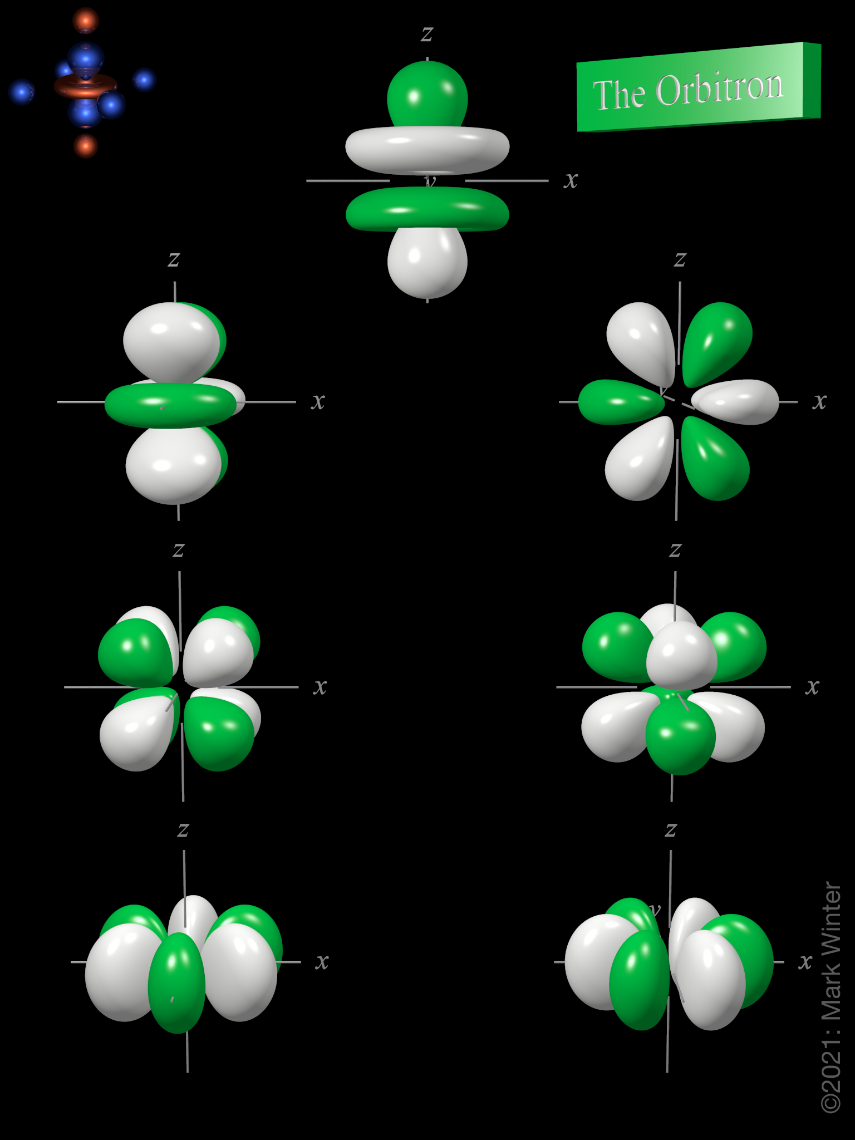
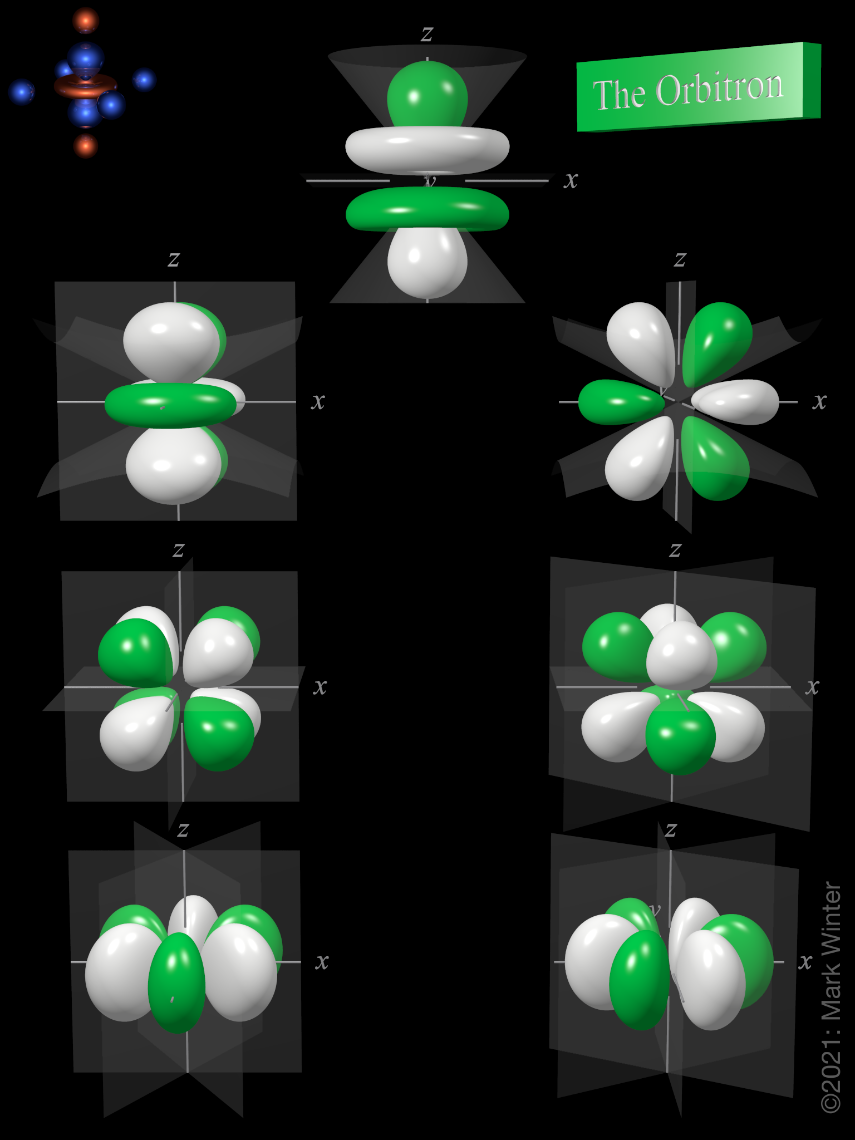
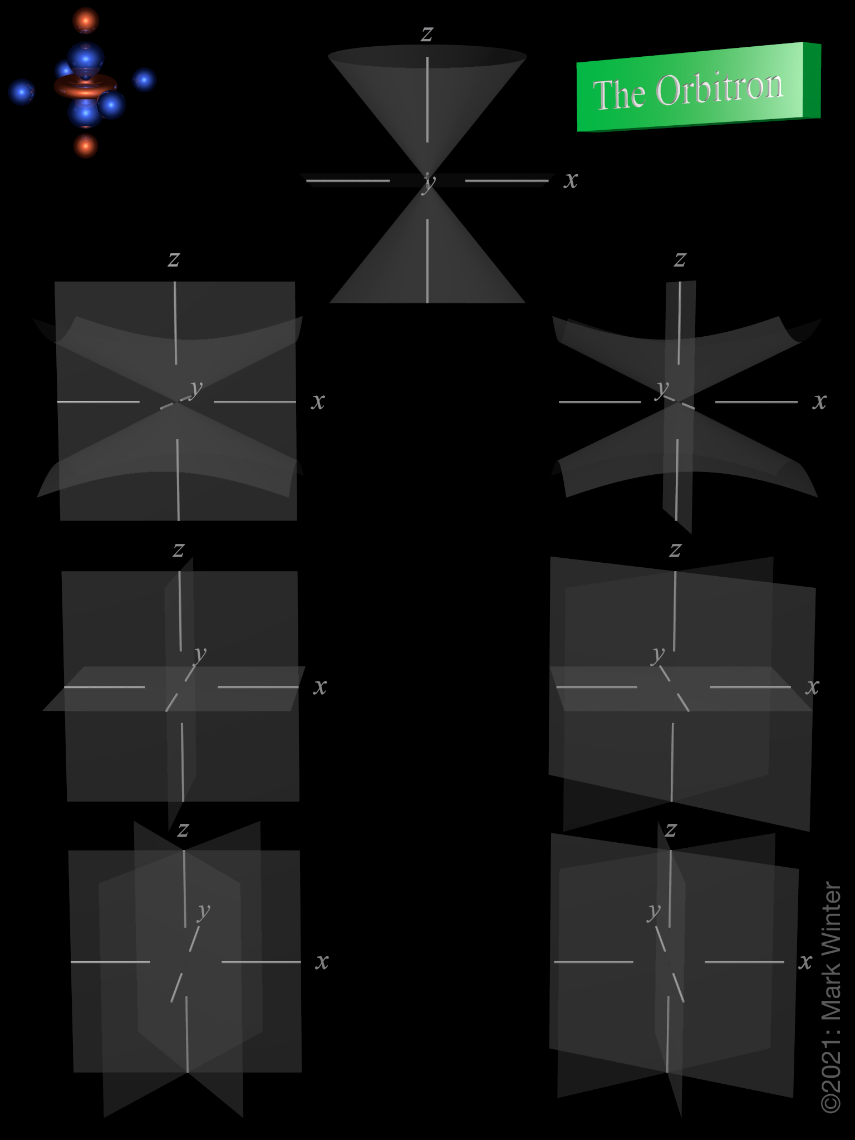
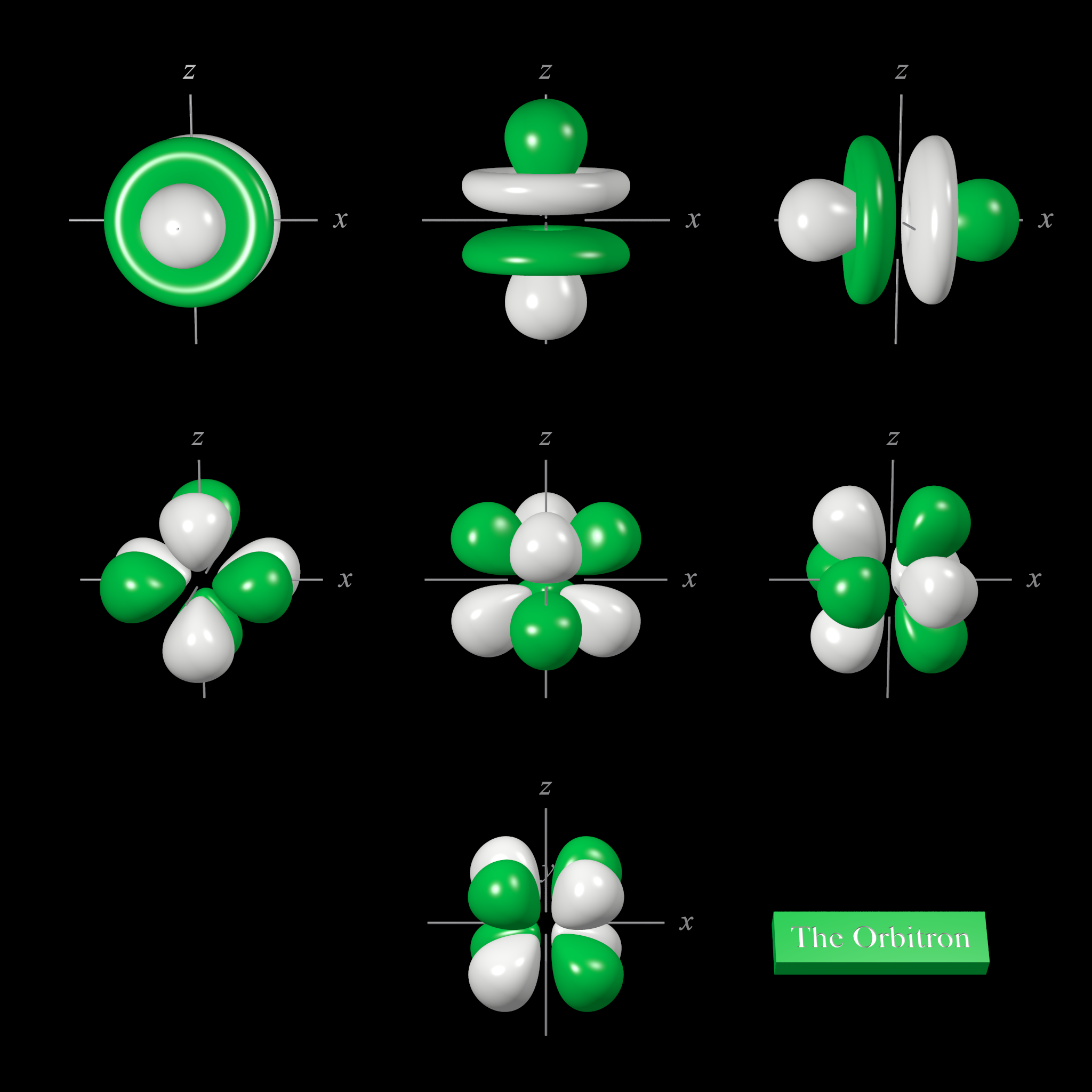
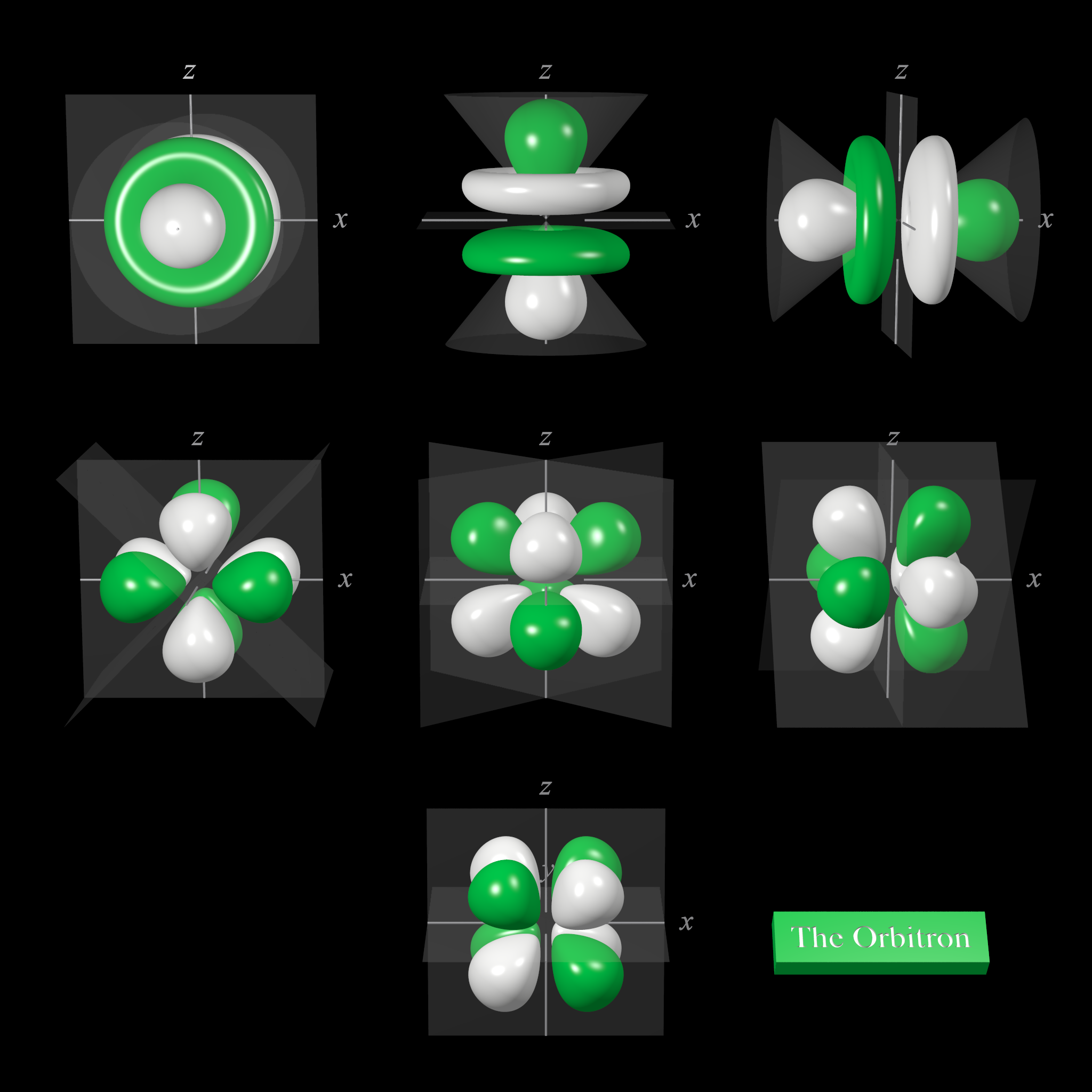
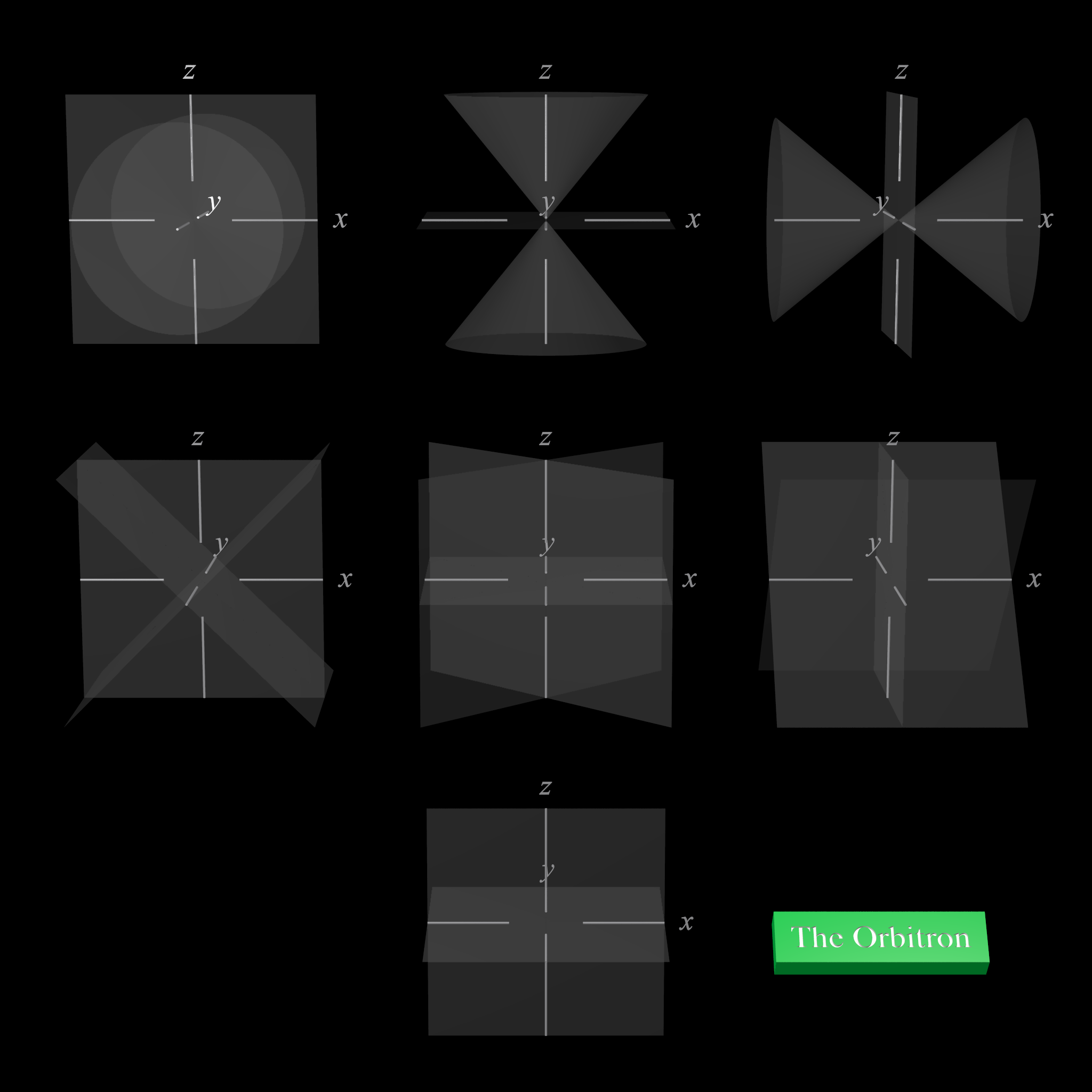

0 Response to "Orbitals In The 4f Sublevel"
Post a Comment